Flags signaled end of World War II
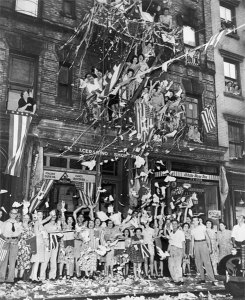
Seven decades ago this month, the horrific years of World War II ended with the surrender of Japan. In the U.S., American flags were raised, saluted and paraded as joyous crowds spilled into streets throughout the nation.
Even pigeons joined in the jubilee. In New York City on August 15, 1945, Mr. and Mrs. John Schulze carried two of their birds to the 12th floor of the Empire State Building. Around noon, they opened a window and released Big Red and Brownie, which took off with small American flags dangling from their claws.
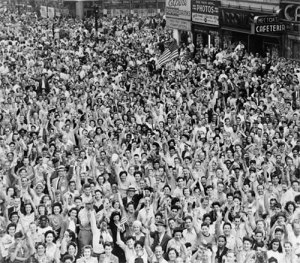
The birds also had tiny messages attached to them: “Well done, boys!” and “God bless our President” were two exclamations of happiness and victory. Mr. Schulze, a veteran of the First World War, remarked that, when that conflict ended, “all we could do to celebrate…was toss out hats in the air. This time, I’m tossing pigeons!”
The avian celebration was sparked by Japan’s informal surrender in mid-August and continued into September’s first week, when formal documents were signed aboard the U.S.S. Missouri in Japan’s waters. In cities and towns across America, people spilled into the streets, waving flags and shouting with joy. In New York City on August 14, a famous photo caught the moment when an amorous sailor kissed a giddy woman in Times Square. On the radio, President Truman announced the armistice.
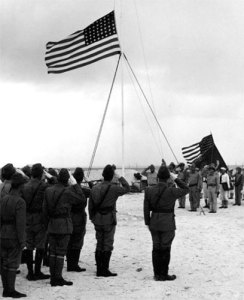
On Sept. 1 in Tokyo, First Lt. Arthur Jones, a Marine, became the first American to hoist the Star-Spangled Banner in Japan. When his unit arrived there, he headed for a fort, clambered up a steel tower and “ran up his flag,” reported the Omaha Evening World. His action, the story added, “fulfilled a Marine Corps goal.”
Two days later, aboard the Missouri, Japanese officials signed the formal peace treaty. The Associated Press informed people back home that “over the battlewagon flew the American flag that fluttered from Washington’s Capitol on the day of infamy, Dec. 7, 1941,” when Pearl Harbor was attacked by Japanese forces.
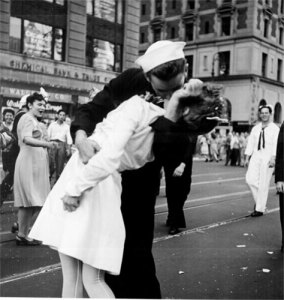
The next day, on Wake Island in the Pacific, more Japanese forces surrendered. The AP wrote that “the flag was run up at 1:50 p.m. with a Marine color guard of about seventy-five officers and men.” Looking on were a Japanese admiral, his staff and some soldiers. As a sign of their capitulation, they “came to attention and saluted our flag as it was raised,” the AP reported.
On Sept. 5 in New Orleans, Major General Claire Chennault, famous for his “Flying Tigers” airmen, accepted as a gift an American flag that flapped above the U.S. Capitol when Japan’s surrender was announced.
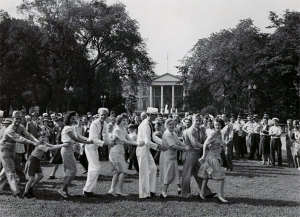
And so it went across the nation as Americans felt peace for the first time in four years and used their flags to show their joy.
